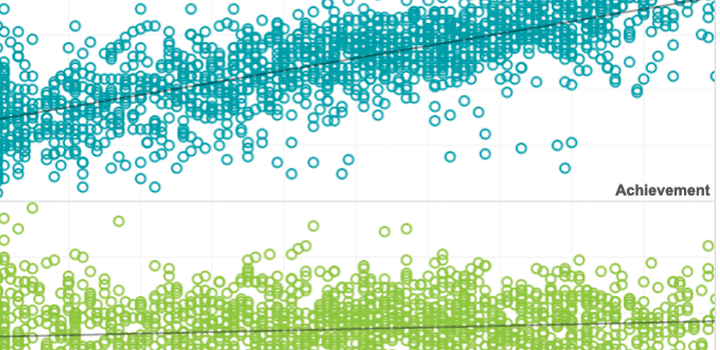Research report
Content Proximity Spring 2022 Pilot Study Research Report
June 2023

Description
The purpose of this research report is to provide detailed information about updates to the MAP Growth item-selection algorithm. This brief includes results from the Content Proximity pilot study, including information on the validity, reliability, and test score comparability of MAP Growth assessments that leverage this new item-selection algorithm.
See MoreRelated Topics


For decades, researchers and practitioners have made a great deal of effort to study a variety of methods to increase parameter accuracy, but only recently can researchers start focusing on improving parameter estimations by using a joint model that could incorporate RT and students information as CI.
By: Shudong Wang, Hong Jiao
Topics: Test design


Examine construct validity of computerized adaptive test in K–12 assessments
The purpose of this study is to investigate the effect of missing data in computerized adaptive tests (CAT) on test construct validity.
By: Shudong Wang, Hong Jiao
Topics: Computer adaptive testing


These studies are conducted based on assumptions under regular conditions for fixed test forms, such as no missing responses and normal distribution of unidimensional ability for a population.
By: Shudong Wang, Hong Jiao
Topics: Measurement & scaling, Computer adaptive testing, Item response theory


This study, using real data, provides empirical evidence of construct and invariance construct of MAP scales across grades at different academic calendars for 10 different states.
By: Shudong Wang, Marth S. McCall, Hong Jiao, Gregg Harris
Topics: Measurement & scaling, Test design


The utility of adaptive testing in addressing the problem of unmotivated examinees
This integrative review examines the motivational benefits of computerized adaptive tests (CATs), and demonstrates that they can have important advantages over conventional tests in both identifying instances when examinees are exhibiting low effort, and effectively addressing the validity threat posed by unmotivated examinees.
By: Steven Wise
Topics: Measurement & scaling, Innovations in reporting & assessment, School & test engagement


The potential of adaptive assessment
In this article, the authors explain how CAT provides a more precise, accurate picture of the achievement levels of both low-achieving and high-achieving students by adjusting questions as the testing goes along. The immediate, informative test results enable teachers to differentiate instruction to meet individual students’ current academic needs.
By: Edward Freeman
Topics: Innovations in reporting & assessment, Measurement & scaling, Student growth & accountability policies


Response time as an indicator of test taker speed: assumptions meet reality
The growing presence of computer-based testing has brought with it the capability to routinely capture the time that test takers spend on individual test items. This, in turn, has led to an increased interest in potential applications of response time in measuring intellectual ability and achievement. Goldhammer (this issue) provides a very useful overview of much of the research in this area, and he provides a thoughtful analysis of the speed-ability trade-off and its impact on measurement.
By: Steven Wise
Topics: Measurement & scaling, Innovations in reporting & assessment, School & test engagement


